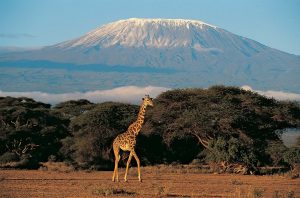Understanding the Altitude of Kilimanjaro Climb
Known as the "Roof of Africa," Mount Kilimanjaro is the highest peak in Africa, standing at an impressive 5,895 meters (19,341 feet). Climbing this iconic mountain is a challenging and rewarding experience that attracts adventurers from around the world. However, one of the biggest obstacles that climbers face when ascending Kilimanjaro is the high altitude. Understanding the effects of altitude and preparing for the challenges it presents is crucial for a successful climb.
Altitude Effects on Kilimanjaro Climbers
As climbers ascend Mount Kilimanjaro, they will experience a decrease in oxygen levels due to the lower air pressure at higher altitudes. This can lead to a range of symptoms known as acute mountain sickness (AMS), including headache, nausea, fatigue, and difficulty breathing. In severe cases, altitude sickness can progress to high altitude pulmonary edema (HAPE) or high altitude cerebral edema (HACE), which can be life-threatening if not treated promptly.
To mitigate the effects of altitude sickness, climbers need to acclimatize properly by ascending gradually and allowing their bodies time to adjust to the thinner air. It is essential to listen to your body and communicate any symptoms of AMS to your guide or fellow climbers. Hydration, proper nutrition, and pacing yourself are all key factors in managing altitude sickness on Kilimanjaro.
Preparing for High Altitude Challenges
Preparing for the high altitude challenges of climbing Mount Kilimanjaro requires physical fitness, mental toughness, and proper gear. Before embarking on the climb, it is recommended to undergo a thorough medical examination to ensure you are fit for high altitude trekking. Cardiovascular fitness, strength training, and hiking at higher elevations are all beneficial in preparing your body for the rigors of climbing Kilimanjaro.
In addition to physical preparation, climbers should also pack appropriate gear for the altitude. This includes warm clothing, sturdy hiking boots, a good quality sleeping bag rated for cold temperatures, and a backpack with essential supplies such as water, snacks, and a first aid kit. Proper gear will help you stay comfortable and safe during the climb.
Sunset Africa Safari offers guided Kilimanjaro climbs with experienced guides who are knowledgeable about altitude effects and safety protocols. Their team is dedicated to ensuring a safe and enjoyable experience for all climbers, from beginners to seasoned trekkers. For booking inquiries and more information about Kilimanjaro climbs, please contact info@sunsetafricasafari.com.
In conclusion, understanding the altitude of Kilimanjaro climb is essential for a successful and safe expedition. By preparing physically, mentally, and with the right gear, climbers can overcome the challenges of high altitude and reach the summit of Africa’s highest peak. With proper guidance and support from experienced tour operators like Sunset Africa Safari, climbing Kilimanjaro can be a truly unforgettable adventure.



